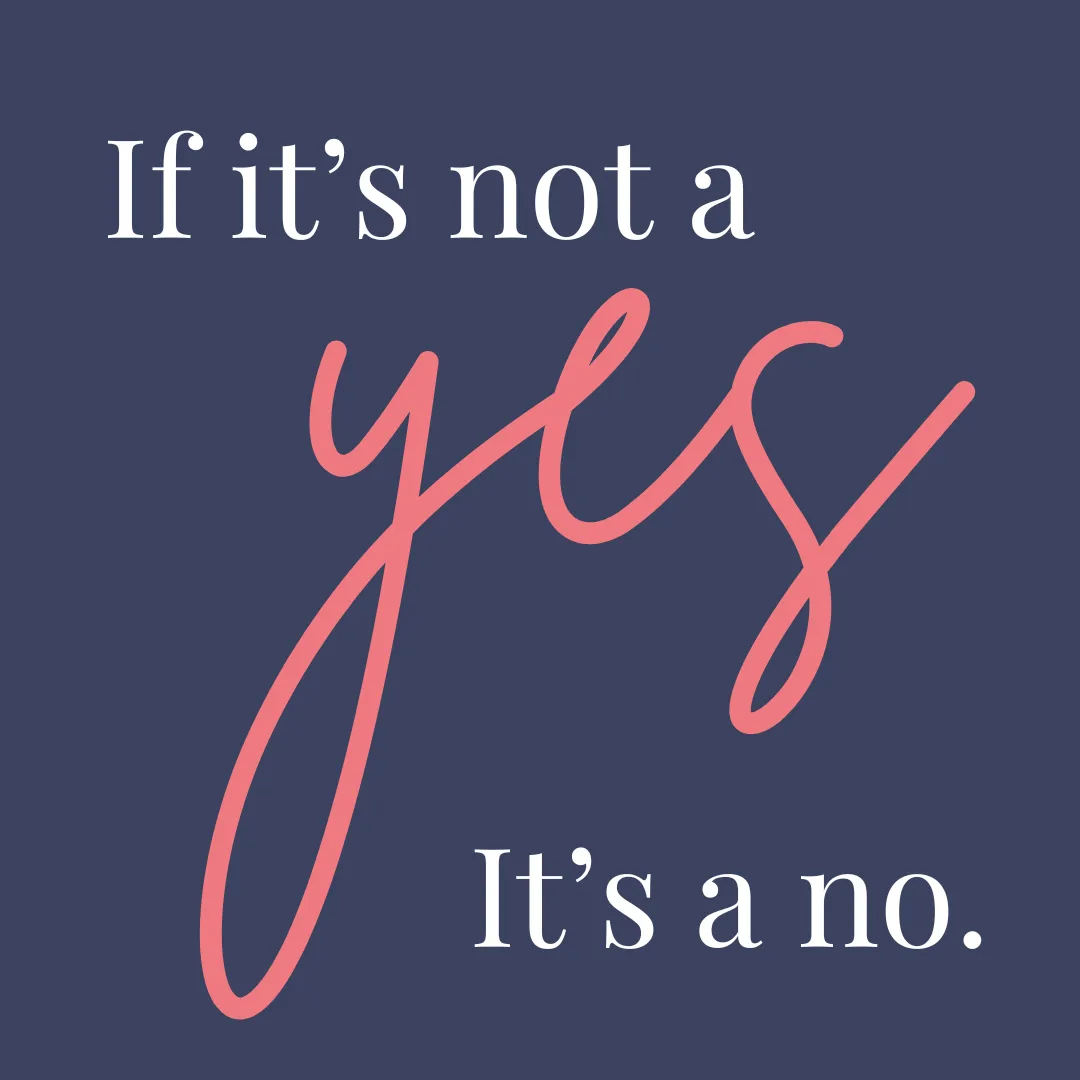New Blog

If it's not a yes, it's a no.
The Empowerment of Authenticity: Saying Yes When You Mean Yes, and No When You Mean No.
In a world where society's expectations often pressure us to say "yes" even when we mean "no," the empowerment of authenticity is powerful. How many times have we found ourselves saying, "maybe," "possibly," or "I think so" when our hearts, our intuition, our soul self is silently shouting "noooooo"? How many opportunities for genuine connection and growth have we missed by not confidently saying "yes" when we truly mean it? It works both ways you see. Saying yes when we mean no, saying no when we mean yes.
The Culture of People-Pleasing
The tendency to say "yes" when we mean "no" can stem from various sources, including a desire to please others, fear of conflict or rejection, or simply a lack of awareness of our own boundaries and priorities. From a young age, many of us are taught that saying "yes" is polite and accommodating, while saying "no" is selfish or rude. Consequently, we may act out of the overloaded files in the subconscious filing cabinet, for not wanting to be seen as demanding or upset the apple cart!
The Cost of Insincerity
However, the cost of this insincerity can be significant, on all levels. Physically, we lose connection with our soul self, to that part of us who has all of the answers. Mentally and emotionally, we are simply saying yes and no, not taking into account the resentment, guilt, annoyance we may feel towards others and ourselves. Energetically we are contradicting ourselves, sending out a misaligned energy message. This can be felt by the recipient and impact on relationships.
Continuously saying "yes" to others' demands or invitations, while inwardly resenting the commitments we've made, can lead to burnout, resentment, and a sense of disconnection from our soul self. Moreover, when we continually agree to things we don't genuinely want or believe in, we compromise our integrity and diminish the trust others place in us.
The Liberation of Authentic Expression
Yet, there is immense power in embracing authenticity and reclaiming our ability to say "yes" when we mean it, and "no" when we mean it. When we honour our true desires and boundaries, we cultivate a deeper sense of self-respect and self-trust. We invite genuine connections with others based on mutual understanding and respect, rather than on superficial agreements or obligations.
Cultivating Clarity and Confidence
Learning to share our genuine desires from societal expectations or fear-based impulses requires self-awareness, practise and consistency. It involves tuning into our intuition, acknowledging our feelings without judgment, and learning to trust ourselves. Creating clarity around our values, priorities, and boundaries, we empower ourselves to express them confidently and authentically.
The Art of Saying "Yes" and "No"
Saying "yes" when we mean it becomes an act of genuine enthusiasm and commitment, enriching our experiences and relationships. Conversely, saying "no" when we mean it becomes an act of self-care and self-respect, preserving our time, energy, and well-being. Both "yes" and "no” are valuable expressions of ourself, deserving of equal respect and consideration.
Conclusion: Embracing Empowerment Through Authenticity
In a world that often encourages conformity and people-pleasing, the courage to say "yes" when we mean yes, and "no" when we mean no, is a beautiful act of self-empowerment. It is a declaration of our commitment to living authentically, honouring our truth, and nurturing genuine connections with others. As we embrace authenticity in our words and actions, we pave the way for a more fulfilling and empowered way of being in the world.
So, what next?
It all reads great in theory doesn’t it? How about when the kids are asking for something? The stressed partner making an unconsidered demand? The best friend who isn’t ready to accept a no to an invitation. The list is endless.
Start small. Become aware. When are we saying yes, when are we saying no. Is there a common pattern or theme.
Pause. Take a breath.
Recognise the words we might use instead of no. Maybe, perhaps, possibly, I think, but. What are our most used no’s in disguise?
Commit to the first response that comes up, notice where it is in your body. Do this before the safety brain comes into play.
Repeat, repeat, repeat until our aligned response comes naturally.
Enjoy and celebrate the freedom that comes with our authenticity.
Remember we are only ever responsible for what we think, do and say. Everything else is out of our control.
